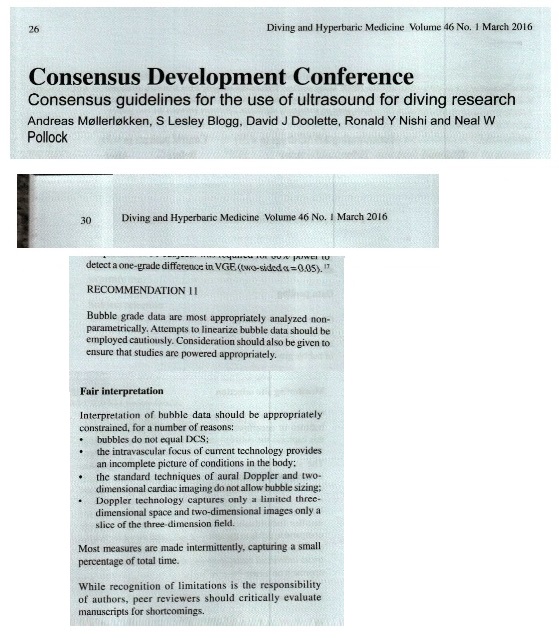No, not cherry picking. You said VGE were not correlated with DCS.
Simon and I have acknowledged, dozens of times on these threads, that "The detection of bubbles in any individual is not diagnostic for decompression sickness (DCS)." The truly bizarre part of this argument is that you are quoting something I actually wrote.
Our point, and the one that makes you uncomfortable, is that if a schedule is dived multiple times, and the median peak VGE grade is, say, 3 or greater, the correlation of VGE and DCS suggests the schedule has a relative high risk of DCS compared to a schedule that results in lower VGR grades.







